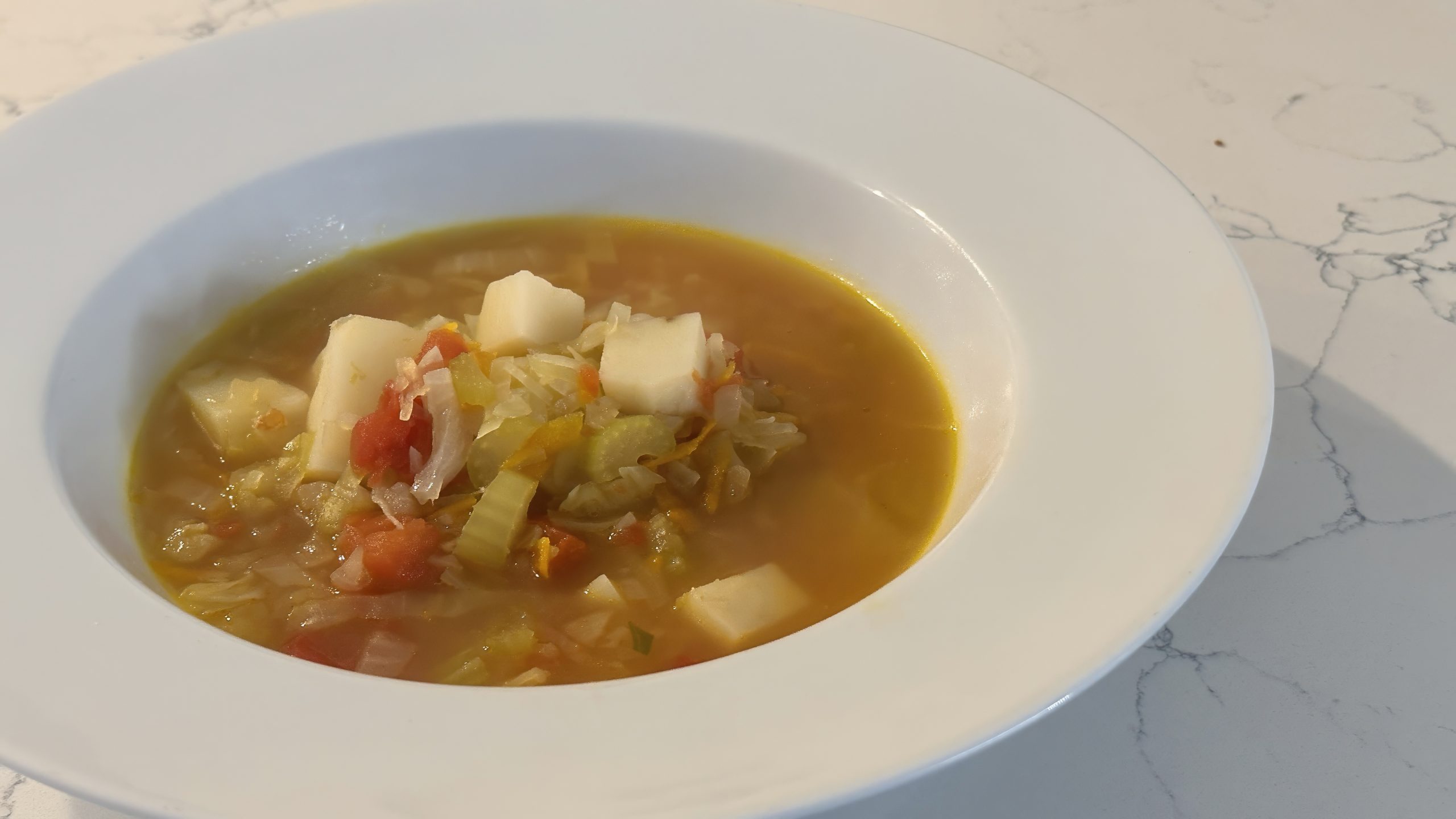
Worldwide Food Tour – Russia
Shchi is a traditional Russian cabbage soup that has been a cornerstone of Russian cuisine for over a thousand years. The basic version combines fresh or fermented cabbage with meat broth (typically beef), root vegetables like carrots and potatoes, onions, and aromatic herbs. In leaner times or during Orthodox fasting periods, a meatless version called “empty shchi” was common.
The soup has a hearty, tangy flavor profile, especially when made with sauerkraut. The long, slow cooking process allows the flavors to meld together, creating a rich broth where the sweetness of carrots balances the sourness of cabbage. It’s often finished with fresh dill and a dollop of sour cream (smetana).
Russian black bread (černyj xleb) is the traditional accompaniment to shchi. This dense, dark sourdough rye bread gets its distinctive color and complex flavor from a combination of rye flour, molasses, and sometimes coffee or dark beer. The bread often includes caraway seeds and has a slightly sour taste with a thick, chewy crust and moist interior.
The history of these foods is deeply intertwined with Russian culture. Shchi was so fundamental to Russian diet that there’s an old saying: “Щи да каша – пища наша” (Shchi and porridge are our food). The soup’s popularity was partly due to cabbage being one of the few vegetables that could be preserved through the long Russian winters.
Black bread similarly became a staple because rye could grow in the harsh Russian climate where wheat often failed. During the Siege of Leningrad in World War II, the recipe for the city’s black bread was adjusted to include sawdust and other fillers, becoming a symbol of both survival and suffering.
Together, shchi and black bread represent the resourcefulness and endurance that characterized much of Russian peasant cuisine, creating deeply nourishing food from available ingredients that could sustain people through harsh winters and difficult times.